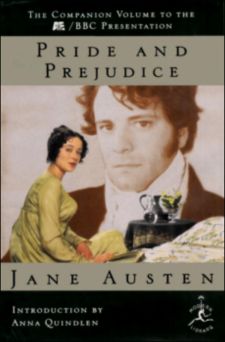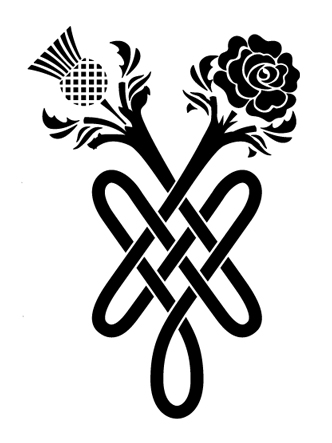
In Georgette Heyer's 'Marmite Novel' (see my last post on the subject!) Regency Buck, 'Clorinda' is the nickname given to Judith Taverner by Lord Worth when she refuses to introduce herself to him at the start of the story. Shortly after giving her this unusual name, he adds insult to injury by stealing a kiss from her:
“What is your name?"
"Again sir, that is no concern of yours."
"A mystery," he said. "I shall have to call you Clorinda."
Later:
"Judith! What the devil? exclaimed Peregrine. "Has there been an accident?"
"Judith," repeated the gentleman of the curricle pensively. "I prefer Clorinda.”
Worth uses the nickname occasionally when he wishes to goad Judith into losing her temper, as in: "Poor Clorinda"
But who was Clorinda? I came a cross several references to the name, so it seemed a multiple choice question was in order!
Was she:
a) Clorinda, the Queen of the Shepherdesses, Robin Hood's first love? This Clorinda can be found in verses collected by Francis James Child and published in the late 19th century. Although the publication date is long after Regency Buck is set, the verses themselves range from the 13th to the 18th century, so it is possible that Worth had heard of this Clorinda. In the book, Judith is outraged to be given the nickname 'the milkmaid' so it is possible that her appearance makes Worth think of this country girl analogy.
b) Clorinda was a portrait by Thomas Guest (I have not been able to find a copy of it), which was on display in the Royal Academy in 1811, the year Regency Buck is set. Guest also painted a portrait of Jem Belcher the boxer. Worth was taught to box by Belcher so it is possible he saw Guest's portrait of Clorinda at the same time that he saw that of his tutor.
c) 'The Fair Clorinda (or Clarinda) - who made love to me, imagin'd more than woman' was the subject of a risque poem by Aphra Benn (1640 to 1689). In the poem the female speaker addresses Clorinda as both a 'fair, lovely maid' and 'lovely, charming youth'. There is ambiguity in the poem about Clorinda's sex. Could Worth have used this sexually charged, androgynous (possibly hermaphrodite), name to rile Judith?
d) 'Sing Fair Clorinda' is a sonnet written by Henry Lawes (1595 to 1662). Worth may have simply meant that Judith resembled the 'fair Clorinda' of the title.
e) ‘Cicilia and Clorinda’, or ‘Love in Arms’ is a 17th-century drama by Thomas Killigrew. The work was first published in 1664. In it, Clorinda is an Amazon or ‘warrior maid’ Judith, we know, is a tall girl and, in the book, she is described as 'an Amazon'. Worth may have used the nickname in reference to both her size and her feisty nature.
f) Jerusalem Delivered (La Gerusalemme liberata) is an epic poem by the Italian poet Torquato Tasso first published in 1581, which tells the story of the First Crusade. Clorinda, a warrior-maiden, joins the Muslims, and the Christian knight Tancredi falls in love with her. Again, Worth may have been comparing the spirited Judith to the warrior heroine of this poem.
I must stress that I don't know the answer to this question! I know which one I think it is, but there is no way of knowing exactly what Georgette Heyer was trying to tell us about both Worth and Judith with her use of this nickname. Perhaps she wasn't trying to tell us anything at all, maybe she just liked the name ...
“What is your name?"
"Again sir, that is no concern of yours."
"A mystery," he said. "I shall have to call you Clorinda."
Later:
"Judith! What the devil? exclaimed Peregrine. "Has there been an accident?"
"Judith," repeated the gentleman of the curricle pensively. "I prefer Clorinda.”
Worth uses the nickname occasionally when he wishes to goad Judith into losing her temper, as in: "Poor Clorinda"
But who was Clorinda? I came a cross several references to the name, so it seemed a multiple choice question was in order!
Was she:
a) Clorinda, the Queen of the Shepherdesses, Robin Hood's first love? This Clorinda can be found in verses collected by Francis James Child and published in the late 19th century. Although the publication date is long after Regency Buck is set, the verses themselves range from the 13th to the 18th century, so it is possible that Worth had heard of this Clorinda. In the book, Judith is outraged to be given the nickname 'the milkmaid' so it is possible that her appearance makes Worth think of this country girl analogy.
b) Clorinda was a portrait by Thomas Guest (I have not been able to find a copy of it), which was on display in the Royal Academy in 1811, the year Regency Buck is set. Guest also painted a portrait of Jem Belcher the boxer. Worth was taught to box by Belcher so it is possible he saw Guest's portrait of Clorinda at the same time that he saw that of his tutor.
c) 'The Fair Clorinda (or Clarinda) - who made love to me, imagin'd more than woman' was the subject of a risque poem by Aphra Benn (1640 to 1689). In the poem the female speaker addresses Clorinda as both a 'fair, lovely maid' and 'lovely, charming youth'. There is ambiguity in the poem about Clorinda's sex. Could Worth have used this sexually charged, androgynous (possibly hermaphrodite), name to rile Judith?
d) 'Sing Fair Clorinda' is a sonnet written by Henry Lawes (1595 to 1662). Worth may have simply meant that Judith resembled the 'fair Clorinda' of the title.
e) ‘Cicilia and Clorinda’, or ‘Love in Arms’ is a 17th-century drama by Thomas Killigrew. The work was first published in 1664. In it, Clorinda is an Amazon or ‘warrior maid’ Judith, we know, is a tall girl and, in the book, she is described as 'an Amazon'. Worth may have used the nickname in reference to both her size and her feisty nature.
f) Jerusalem Delivered (La Gerusalemme liberata) is an epic poem by the Italian poet Torquato Tasso first published in 1581, which tells the story of the First Crusade. Clorinda, a warrior-maiden, joins the Muslims, and the Christian knight Tancredi falls in love with her. Again, Worth may have been comparing the spirited Judith to the warrior heroine of this poem.
I must stress that I don't know the answer to this question! I know which one I think it is, but there is no way of knowing exactly what Georgette Heyer was trying to tell us about both Worth and Judith with her use of this nickname. Perhaps she wasn't trying to tell us anything at all, maybe she just liked the name ...








 RSS Feed
RSS Feed